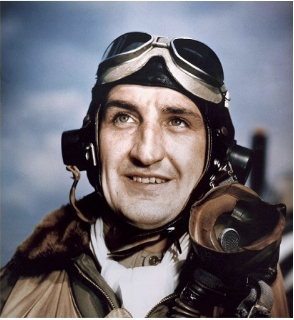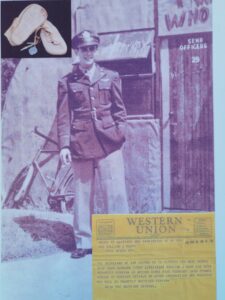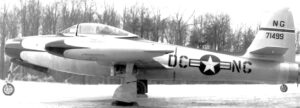"Gabby" Gabreski, Designated an Ace Pilot in Two Wars
by Melissa LaScaleia
Francis (Gabby) S. Gabreski was born to Polish immigrant parents in Oil City, Pennsylvania on January 28, 1919. Like many immigrant parents, they had dreams for their son’s success, and he attended Notre Dame University where he became interested in flying planes. His passion didn’t match his skill however, and Gabby had to train hard to eventually become one of the greatest flying aces of the 21st century.
During World War II, he enlisted in the United States Army Air Corps. He completed basic flight training at Gunter Army Air Base, Alabama, and advanced training at Maxwell Field, Alabama.
He earned his pilot wings and commission as a second lieutenant in March 1941, and deployed to Hawaii. He met his wife there, and the two were engaged soon after the Japanese attacked Pearl Harbor. Gabby was part of the squadron flying P-36 aircraft that attempted to intercept the attack.
As the war progressed, he realized that his ability to speak fluent Polish could be an asset to the U.S. Army. He closely followed the tactics of the air battles taking place in Europe, especially the capabilities of the legendary 303 Polish Fighter Squadron that was part of the British Royal Air Force.
He felt that the American squadrons were lacking in the technical skills of the Polish pilots, and suggested to his commanding officers that they send him to Europe to act as a liaison, imparting the knowledge he learned from the Polish pilots to the Americans.
His commanding officer approved the plan, and in 1942 he was promoted to Captain and sent to England. He flew a total of twenty missions with the Polish pilots and attributed what he learned from them to his later success.
In 1943, Gabby joined the 56th Fighter Group, 61st Fighter Squadron, flying the Republic P-47 Thunderbolt. Less than six months later, he took command of the squadron. During this year, he achieved the status of an ace pilot, and also shared the responsibility of leading combat missions. He brought several Polish pilots into his squadron to replace experienced pilots who had reached the end of their terms, one of whom became a legendary ace pilot.
On December 11, during a flight mission, he was struck by enemy fire and a canon shell became lodged in his plane engine, destroying his turbo charger. Under pursuit by a Bf 109, and low on fuel and ammunition, Gabby managed to stay to escape.
In 1944 he was promoted to lieutenant colonel, and on July 5, became American’s leading ace in the European Theater of Operations. He was credited with destroying twenty-eight enemy aircraft, a number never surpassed by any other U.S. pilot fighting the German Luftwaffle.
On July 20, he had reached the maximum limit of combat time allowed for fighter pilots, and was scheduled to return to the United States, where he had arranged his wedding and his hometown had raised funds as a wedding present for him and fiancé.
In high spirits, he elected to fly just one more time. He clipped the runway, bending his propeller trips and crashed landed in enemy territory. He eluded capture for five days, before he was found by the enemy, and held a prisoner of war for nearly a year.
He was married upon his return, and went on to become an ace pilot in the Korean War as well. He is one of only seven pilots to become an ace in two wars, and is credited with destroying over thirty-four aircraft in aerial combat.
He retired as a colonel after twenty-six years in the military, and was one of the Air Force’s most accomplished leaders.
He was also commander of the 342nd Fighter-Day Wing, at the Myrtle Beach Air Force Base, from 1956-1960. He died on January 31, 2002, at the age of 83.




















